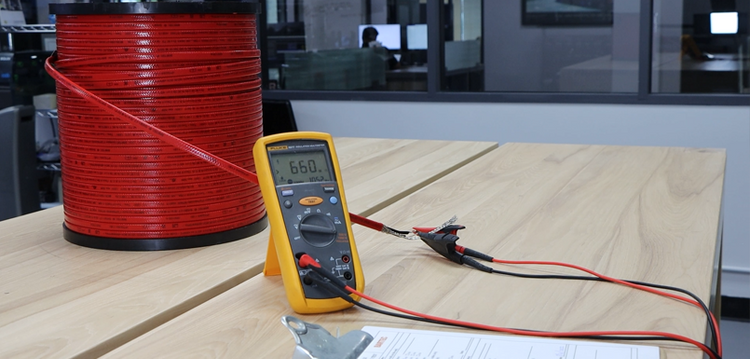How to perform an Insulation Resistance Test (Meg Test)
The quality of insulation resistance is known to degrade with time due to exposure to their environmental conditions. Temperature, humidity, moisture, and dust particles negatively impact these cables inducing electrical and mechanical stress. For any developing or existing site, Meg Tests are conducted on power cables at constant and regular intervals to check the health of their electrical systems.
A Meg Test is a method of testing that assess the integrity of electrical insulation between core conductors and a ground reference. It indicates voltage leakage, damage to the trace heater, and possible insulation faults. Failure to conduct a Meg Test could result in tripping of circuit breakers, electrical shock, or even a fire.
For heat trace cable installation, it's recommended to conduct the test a minimum of four times throughout the installation phases. The preliminary test begins at the receipt of the cable (while still on the reel). Then comes the acceptance test (after the trace heater installation and before thermal insulation). The final inspection test must be completed immediately after the thermal insulation installation. Lastly, meg the cable before energizing the system. You might consider testing at the de-energized panel to include branch circuit wiring.
If a cable reel has been stored for an extended period, you might want to conduct another meg test before the cable is installed on any construction site.
Only properly trained personnel should administer this test. On the video above, we conduct a meg test on BARTEC's self-regulating HSB heating cable. In preparation for the measurement, use the appropriate PPE, follow all safety guidelines, and, if applicable, de-energize the heating circuit. We will start the preliminary test with a cable still on the reel.
Step 1: Safely strip the cable exposing the conductors.
Step 2: Connect the black test lead to the grounding braid and the red test to both bus wires.
Step 3: Perform the insulation resistance test for one minute. A passing test should be at a minimum of 20 megohms.
Step 4: Record the test values. This cable is now ready to be installed.
After installation, your acceptance test requires five steps:
Step 1: Open the power termination kit cover and disconnect wires from the terminals.
Step 2: Connect the black test lead to the grounding braid and the red test to both bus wires.
Step 3: Perform the insulation resistance test for one minute. A passing test should be at a minimum of 20 megohms.
Step 4: Record the test values.
Step 5: Re-connect wires into terminals and close the cover on the power termination kit. Repeat steps one through five for your final inspection test and before energizing the system.
Click on the link to find a copy of our Cable Inspection and Meg Test Form.
Posted by BARTEC US | Electrical Heat Trace Team on Aug 10th 2022





